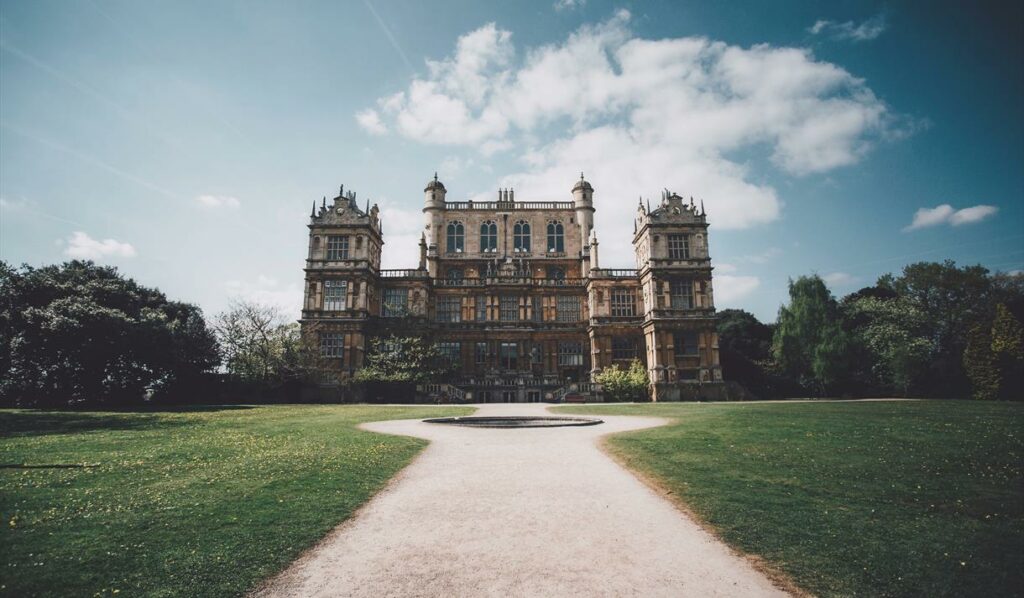It may come as a surprise to hear that even some of the more famous places in Nottingham have their own secrets. Nottingham Castle is one such place but Wollaton Hall has its fair share too.
Wollaton Hall attracts hundreds of thousands of visitors each year and has managed to keep some secrets hidden. It is Grade I listed, so it has a lot more interesting features than you might realise.
The Willoughby mansion in Nottingham was built in 1580 by Sir Francis Willoughby, three miles from the city centre. It was then handed over to the Nottingham City Council in 1926.
The doors have been open to visitors since then, but some sections are still closed to the public

Not many visitors to the hall have access to some parts of the mansion that are rarely seen by the public. For example, some parts of the mansion often used by staff can be accessed from a separate entrance. One of the most exciting parts of this building is its top roof. Visitors can currently only access two parts – the half-roof and prospect room. They both offer undeniably spectacular views.
And it’s not surprising why people are rarely allowed to the top roof, with a seriously narrow, winding staircase being the only way to reach the summit.
Pete Forster, a former employee of the hall formerly now chair of the Friends of Wollaton Park volunteer group, knows all about these ‘special access’ areas.
“But now I just love the place. There are parts of every era from the 1500s that can be seen right here in the hall – and we are adding our own stamp for this era”
Pete is one of the many volunteers who help visitors to the Hall understand its long history through tours and out in public education.
The hall was used as a fire-watch during WWII because at the highest level you can see the whole of Nottingham. Many of the hall’s rooms visitors will see on the standard tour have been restored to mirror how they would have once looked.
Pete believes that all of the untouched regions are where the most important historical facts lie. For those curious about what is inside the hall’s tallest walls, you may feel slightly let down.
Once, the top floors of these towers were accessed by a half-circle roof that reaches up to the sky. Currently, the rooms are being used for storage, with dirt and stones from the original medieval mansion scattered about. Pete described this tower as “scruffy but real.”
“People always ask if I’m fighting a losing battle, but that’s not the case,” he said. “The only thing people might believe is that this is all in vain, but it’s not.” “At one point, parties would have been held out here, but I doubt there were any accidents.
The regular or basic tour includes exploring the wine cellar or underground, where there’s incidentally a water source from which people drink.
From there, we took a walk in the sandstone tunnels and saw an old bath dug out from a cave beneath the hall, rumoured to have been used by Admiral Sir Nesbitt Willoughby.
Its Museum of Natural History
This beautiful Tudor-style building is the setting for an excellent museum that features displays of botany, zoology and geology. There is also a “World of Wildlife” recreation of an African watering hole scene set on 500 acres.
The museum houses only a small number of the city’s 750,000 pieces when it comes to exhibits. This is because there are many separate galleries that contain various items – insects, minerals, and birds.
The Natural Connections gallery highlights the connection between humans and their natural habitats. One of the themes is extinct & endangered species, such as the passenger pigeon, Humboldt penguin, and duck-billed platypus.
The Bird Gallery has been created to look like an old-fashioned museum, similar to those found in the 1930s. This is intentional as it includes displays of taxidermy and birds collected in Africa by Victorian explorer Mansfield Parkyns, who was born in Nottinghamshire.
There is also a phenomenal gallery on Africa with features on African wildlife including the cheetah and gorilla. This gallery includes a striking recreation of an African waterhole with activities around water.
GARDEN
The Wollaton Parklands provide public green space and has formal gardens like the spring display of polyanthus. There are also ornamental cabbage trees and lime trees that help people explore the surrounding deer park.
Our Nottingham Bridal Suite is but a 40-minute drive from Wollaton Hall. We see many brides-to-be making the journey from Nottingham to come and try on a wedding gown.